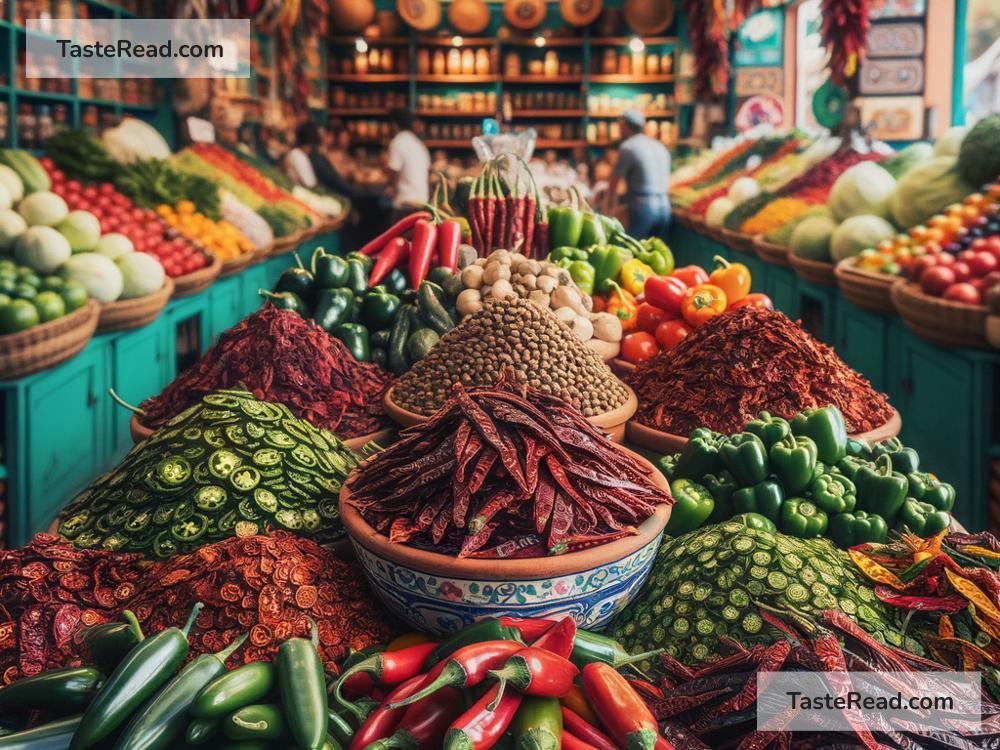The Role of Chili Peppers in Mexican Culinary Traditions
Mexico is a country of vibrant flavors, rich history, and colorful dishes. One of the most important ingredients in its cuisine is the chili pepper. Chili peppers are not only a key part of Mexican cooking but a symbol of the country’s culture and traditions. They add heat, spice, and depth to dishes, making them unforgettable.
A Brief History of Chili Peppers
Chili peppers have been part of Mexican food for thousands of years. They originated in the Americas and were cultivated by ancient civilizations such as the Aztecs, Mayans, and Toltecs. Archeologists believe that chili peppers were first grown in Mexico over 6,000 years ago. These early civilizations valued chili peppers for their unique flavors and medicinal properties.
When the Spanish arrived in Mexico in the early 16th century, they were introduced to chili peppers and carried them back to Europe. From there, chili peppers spread to other parts of the world and eventually became a global sensation. However, their roots remain deeply tied to Mexican culture.
Why Chili Peppers Are Special
Chili peppers are extremely versatile. They come in many shapes, sizes, colors, and heat levels—from sweet and mild to fiery and intense. Some popular types of chili peppers include jalapeños, serranos, poblanos, habaneros, and chipotles. Each type has its own unique flavor and purpose in cooking.
Besides heat, chili peppers add complexity to a dish. They can be roasted, dried, smoked, or blended into sauces. In Mexican cuisine, chili peppers are not just about making food spicy—they are used to create deep layers of flavor that make dishes stand out.
Chili Peppers in Mexican Dishes
The use of chili peppers in Mexican cooking is incredibly widespread. Here are some ways chili peppers are featured in traditional dishes:
-
Salsas
Salsas are one of Mexico’s most famous foods, and chili peppers are the star ingredient. From pico de gallo (a fresh tomato salsa) to salsa verde (made with green tomatillos), chili peppers add a kick to every bite. Whether mild or spicy, salsas are served with tacos, quesadillas, and many other dishes. -
Mole Sauces
Mole is a rich, complex sauce made with a blend of chili peppers, chocolate, spices, and other ingredients. Mole poblano, one of the most famous types, is often served over chicken or turkey. Chili peppers play an essential role in balancing the sweetness and bitterness of the sauce. -
Chiles Rellenos
Chiles rellenos are stuffed chili peppers. Typically, a poblano pepper is roasted, filled with ingredients like cheese or meat, and fried. This dish highlights the chili pepper as both the main component and the container for delicious fillings. -
Chili Pepper Stews and Soups
In traditional soups like pozole, menudo, or birria, chili peppers are used to flavor the broth. They add a smoky richness that brings warmth to these hearty meals. -
Snacks and Street Food
Chili peppers are often added to snacks and street foods such as esquites (corn cups) and elotes (grilled corn on the cob). Mexican candies often feature a combination of chili powder and fruit flavors, creating a unique sweet-and-spicy taste. -
Pickled and Dried Peppers
Chili peppers are preserved in a variety of ways in Mexican cuisine. Dried chili peppers, such as ancho, guajillo, and pasilla, are often rehydrated and used in sauces. Pickled chili peppers, like jalapeños en escabeche, are a common condiment.
Chili Peppers and Mexican Culture
Chili peppers are more than just an ingredient—they are part of Mexican identity. They represent boldness, passion, and tradition. Mexican people have a saying: “Without chili, there is no Mexico.” This reflects the importance of chili peppers in their food and culture.
Chili peppers are also celebrated during festivals and holidays. For example, mole is often prepared for special occasions, and chili-based dishes are served during family gatherings and celebrations.
Health Benefits
In addition to their flavor, chili peppers are known for their health benefits. They contain capsaicin, the compound that causes their heat. Capsaicin has been shown to reduce inflammation, improve digestion, and even boost metabolism. Chili peppers are also rich in vitamins like A and C, making them a nutritious addition to meals.
Conclusion
Chili peppers are an essential part of Mexican culinary traditions. They bring heat, flavor, and character to dishes ranging from salsas and moles to soups and snacks. Their history goes back thousands of years, connecting modern kitchens to ancient civilizations. For Mexicans, chili peppers are not just food—they are a cultural treasure that represents the soul of their nation.
So, the next time you enjoy a spicy Mexican dish, take a moment to appreciate how chili peppers have shaped the world of flavors. Whether mild or hot, these little gems are at the heart of Mexican cooking and will continue to be an important part of its traditions for generations to come.


